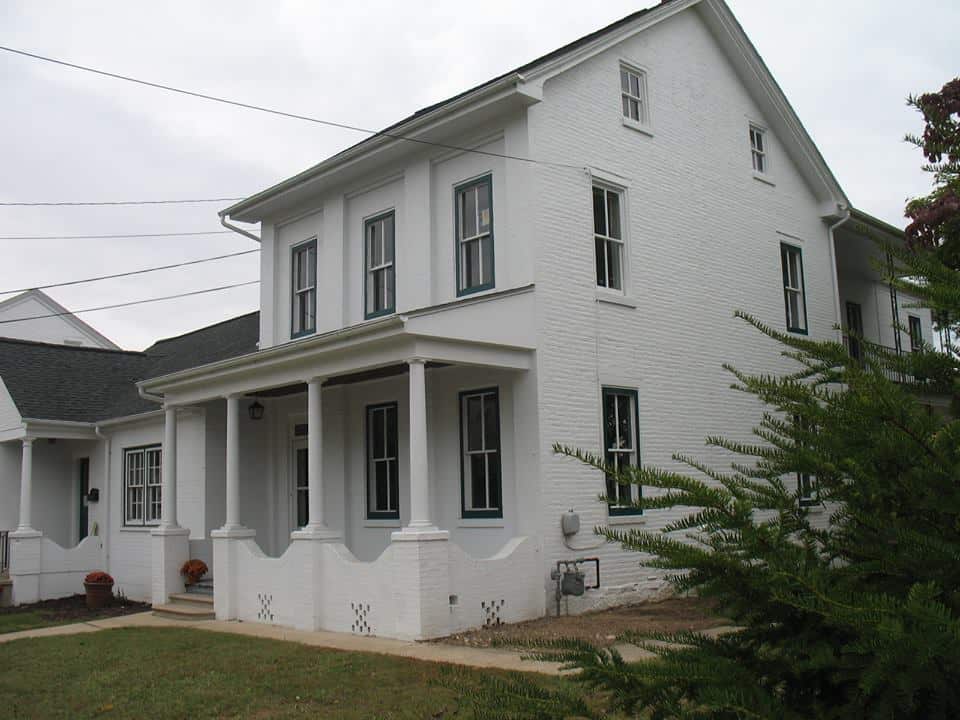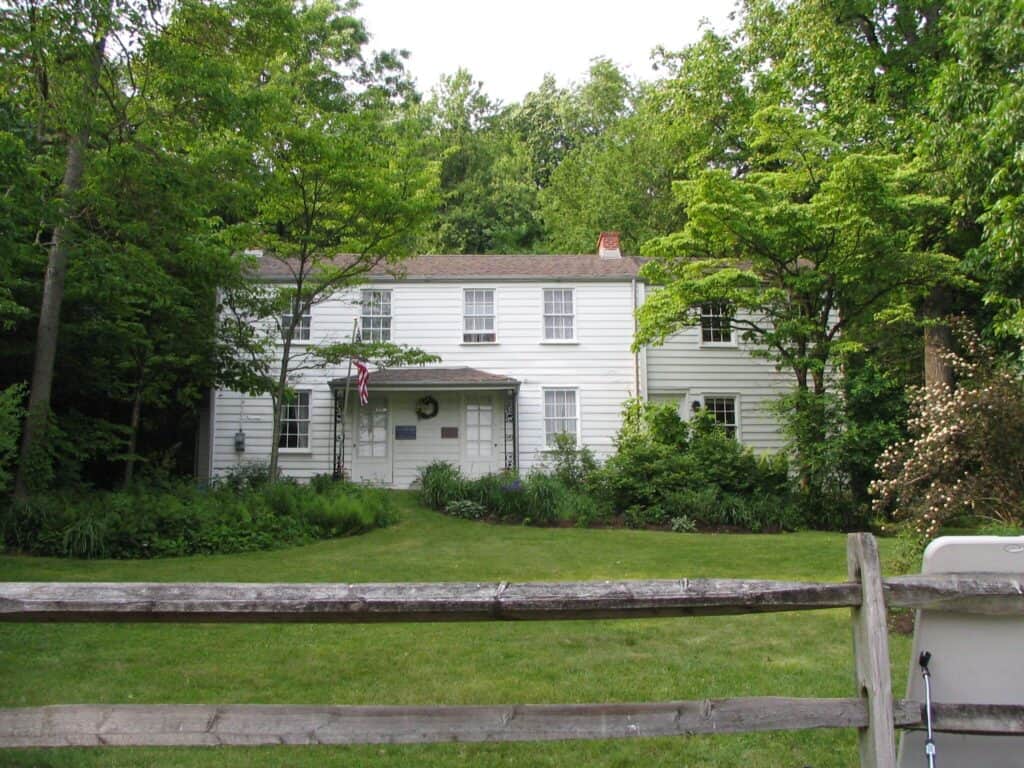10 books by Pennsylvania authors to add to your summer reading list
Regardless of where their books were set, these Pennsylvania authors drew inspiration from the Keystone State.
Ah, summer in Pennsylvania: The sun is out, the birds are singing, and the humid air is so thick it feels like you’re wading through it. While you’re waiting for the heat to break, pick up a new summer read in some A/C. We’ve got you covered with a summer reading list, ft. Pennsylvania authors who were shaped by our state.
“Rabbit, Run” – John Updike
Writer John Updike credited his Berks County childhood home as the place where his “artistic eggs were hatched.” He lived in Shillington until he was 13, and the small, middle-class town went on to inspire the small, middle-class towns depicted in Updike’s novels.
His most famous work is the five-book “Rabbit” series that follows the life of Harry “Rabbit” Angstrom, exploring the promises and realities of the American Dream through Rabbit’s eyes. Pick up the first book in the series—“Rabbit, Run”—and get started on reading what many consider the quintessential Great American Novel. You can also visit a Berks County museum, the John Updike Childhood Home, for more insight into the author’s life.

“The Johnstown Flood” – David McCullough
Born in Pittsburgh, David McCullough had a long career publishing deep dives into historic events and important people. He wrote biographies on historic figures like Harry S. Truman and John Adams, as well as accessible histories of topics like the Brooklyn Bridge and the Revolutionary War. He won the Pulitzer Prize and the National Book Award—twice—and in 2013, Pittsburgh named its 16th Street Bridge after McCullough.
But the very first book McCullough wrote was “The Johnstown Flood,” which detailed the events surrounding the horrific flood that rocked the small Cambria County town in 1889. Though “The Johnstown Flood” was published in 1968, the disaster story of preventable tragedy and glaring inequality is just as readable today. McCullough actually interviewed people who survived the flood, and the recollections he shares are both disturbing (after all, more than 2,200 people died) and inspiring (after all, people will risk a great deal to save each other).
“Fences” – August Wilson
Growing up in Pittsburgh had a profound impact on playwright August Wilson, who was born in the city’s historically Black Hill District in 1945. He once said, “Pittsburgh has provided the fuel and the father for all of my work … I carry Pittsburgh, in the vibrant life and experiences of the Hill, with me.” His play “Fences” is one of the 10 plays that make up Wilson’s “Pittsburgh Cycle,” which explores the Black American experience through the Black community in the city.
As it is a play, “Fences” isn’t a novel, but you can still read the Pulitzer Prize-winning work in book form. The story follows Troy Maxson, a Black trash collector who was once a promising player in the Negro Baseball League but couldn’t play in the all-white Major League Baseball to make enough money for his family. Set in the Hill District, the play explores themes of racial injustice, family, and the struggle for the American Dream.
“Portrait of the Artist as a Bingo Worker: Essays on Work and the Writing Life” – Lori Jakiela
In “Portrait of the Artist as a Bingo Worker: Essays on Work and the Writing Life,” Pittsburgh author Lori Jakiela chronicles a life of odd jobs—flight attendant, journalist, professor, and worker at the local bingo hall, to name a few—by way of funny and moving essays about work and what we make of it. These literary morsels are also set against a backdrop of Western Pennsylvania and the strange and wonderful characters that populate it. You can read the titular essay on Electric Literature to get a taste of the book.
“Shake Loose My Skin” – Sonia Sanchez
Add a book of poetry to your summer reading list with “Shake Loose My Skin” by Philadelphia poet Sonia Sanchez. The book contains work spanning decades and poems which—as Sanchez once said of poetry—”[keep] us constantly confronting the most important question of this twenty-first century: what does it mean to be human?” Sanchez, who lives in the Germantown neighborhood of the city, became Philadelphia’s first poet laureate in 2011. You can also read some of Sanchez’s poems online.
“Complete Stories and Poems” – Edgar Allan Poe
You may not immediately connect Edgar Allan Poe with Pennsylvania, as the disturbing events in many of his tales unfold in eerie, otherworldly settings. But the classic horror writer spent roughly six productive years in Philadelphia, and some of his stories are believed to be based there.
For example, “The Black Cat,” written in Philadelphia, takes place in a major urban city. In fact, the basement of Poe’s Philadelphia home—now the Edgar Allan Poe National Historic Site—is similar to the one described in the short story. You can visit the historic site to see the similarities, like the fact that both have false chimney areas—though unlike in the story, the space at the historic site does not contain a body. Read “The Black Cat” and other famous Poe stories in “Complete Stories and Poems,” which contains the author’s collected works.

“In Her Shoes” – Jennifer Weiner
Fiction writer Jennifer Weiner gained fame for her sparkling contemporary novels, the first of which, “Good in Bed,” was published in 2001. It and many of Weiner’s other books are set in the author’s home city of Philadelphia. Like many Pennsylvania authors, Weiner often mentions Philadelphia landmarks and haunts in her writing.
Her book “In Her Shoes”—which you may remember from the 2005 movie adaptation—follows two sisters who are extremely different from each other, except for the fact that they wear the same shoe size. The novel is a fun but meaningful romp that explores themes of sisterhood and identity.
“An American Childhood” – Annie Dillard
Sometimes described as one of the best childhood memoirs ever written, Annie Dillard’s “An American Childhood” takes place close to home in the Point Breeze neighborhood of Pittsburgh. The 1987 memoir describes Dillard’s upbringing in the 1950s and 1960s, when the nation was still recovering from a world war and the Great Depression, and brings the reader into Dillard’s mind as she emerges into adolescence. It’s also, according to Publishers Weekly, “partly a hymn to Pittsburgh, where orange streetcars ran on Penn Avenue in 1953 when she was eight, and where the Pirates were always in the cellar.” Hey, one of those things is still true!
“Silent Spring” – Rachel Carson
Writer Rachel Carson was born just northeast of Pittsburgh in Springdale, where her family’s farm was her first introduction to the natural world. Carson went on to publish several books and articles on nature and the environment, but her most influential was “Silent Spring,” which chronicled the dangers of pesticide use in the United States. Though it was first published in 1962, it remains a classic of environmental nonfiction for a reason.
The book, which helped launch the modern environmental movement, lays out how human health and environmental health are linked and how human actions can have long-term consequences—messages that still resonate amidst today’s changing climate.

“The Perks of Being a Wallflower” – Stephen Chbosky
Stephen Chbosky’s coming-of-age novel is a love letter to growing up and finding yourself as much as it is a love letter to the city where Chbosky spent his childhood and adolescence—Pittsburgh. “The Perks of Being a Wallflower” follows Charlie, a “wallflower” who is still finding himself, but in the meantime, finds a group of friends who change his life. Do not attempt the (dangerous!) stand-up tunnel ride depicted in the book (and movie), though. While Chbosky no longer lives in Pittsburgh, it’s clear the novel wouldn’t exist without it.



